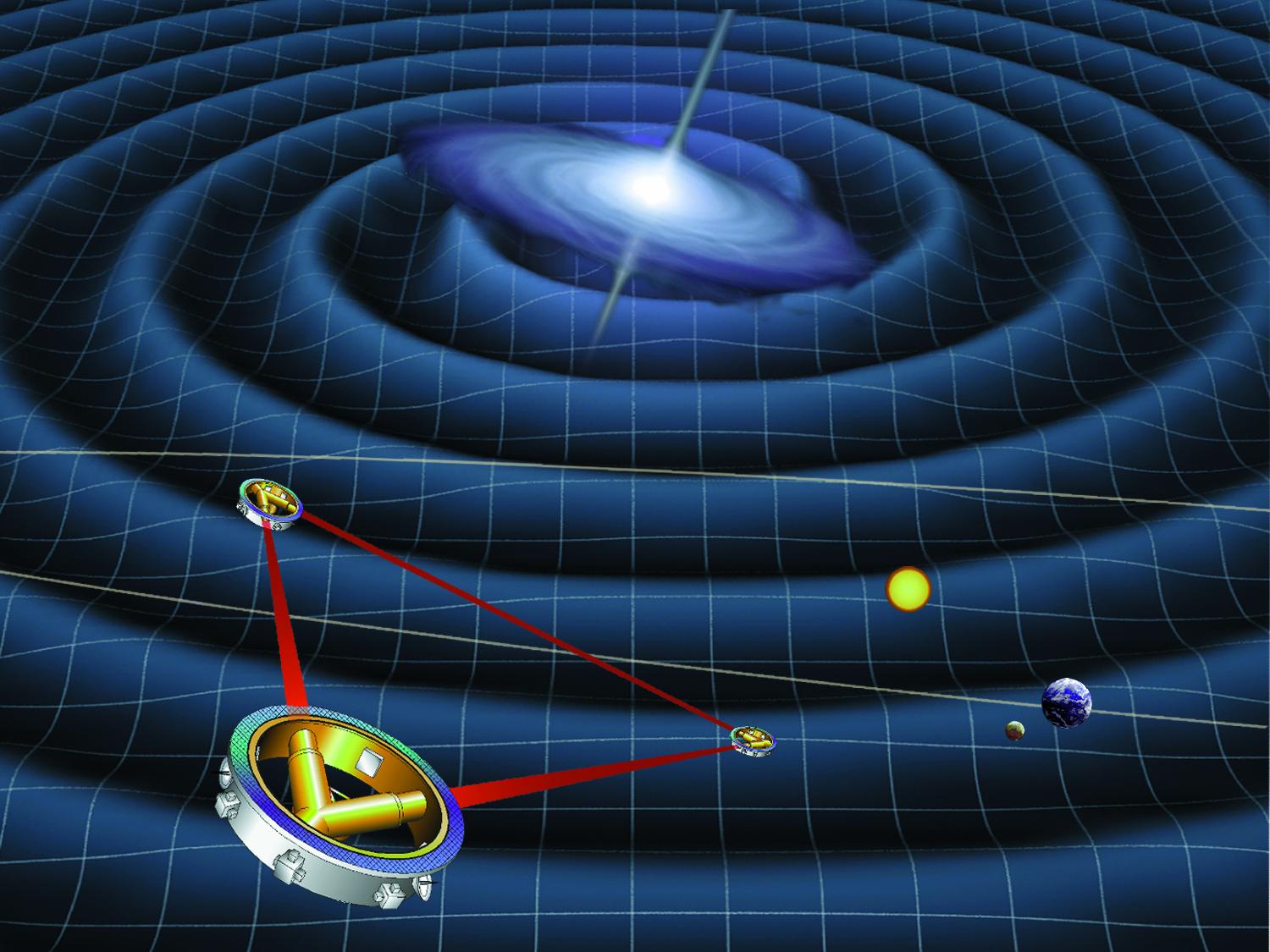Gravitational wave (GW) observatories have been a great addition to cosmologists’ arsenal in the lack decade. With their first effective detection at the Laser Interferometric Gravitational Observatory completed in 2015, they opened up a whole new world of data collection for scientists. However, so far, they haven’t solved one of the fundamental problems at the heart of their discipline – the “Hubble tension.” Now a new paper discusses the possibility of utilizing a network of new, space-based gravitational wave observatories to get closer than ever to the real value of one of the most important numbers in the Universe.
Edwin Hubble didn’t actually discover “Hubble’s Law,” the equation that contains the constant that bears his name – that work was done earlier and independently by Alexander Friedmann and George Lemaitre. Their work showed that the Universe was expanding and that the rate it was growing seemed determined by the distance between the observer and the galaxy itself.
Now commonly accepted as the expansion of the Universe, this was a groundbreaking theory in the 1920s when it was initially formulated. However, like many good scientific theories, it can be simplified to a single equation: v = H0D. In this case, v is the speed of separation (the expansion of the Universe), D is the distance to the galaxy being compared, and H0 is known as the “Hubble Constant.”
Credit – Anton Petrov YouTube Channel
The Hubble constant has been a source of argument for years, as its value literally will help determine the fate of the Universe. If it’s large, then the Universe will end in heat death, where galaxies are so far apart from one another that they can’t ever possibly interact. Alternatively, if it is small, the Universe could end in a “Big Bounce” where gravity overcomes the expansionary force of the Universe. Eventually, everything gets pulled back into a single, solitary point, much like another Big Bang.
Its importance gives scientists plenty of reasons to fret about the Hubble Constant, but it has been notoriously difficult to pin down an exact number, and various experiments have resulted in some variance in the reading. It has never reached a precision threshold that the scientific community is willing to accept – commonly thought to be within 0.9%. In particular, two well-regarded measurement methods, cosmic microwave background radiation measurements and the distance ladder method, don’t agree on the value.
According to a new paper from researchers at Northeastern University in China, gravitational waves can resolve this “Hubble Tension” at the heart of cosmology. Recently there has been a flood of new science following the detection of the first gravitational wave. Still, this fundamental new type of instrument could make plenty of other discoveries. But results from even the most sensitive detectors here on Earth would not be able to fully constrain the Hubble constant to a point where its value could finally be ascertained.
So why not put the sensing platforms in space? This has several advantages, including not as much interference from ground-based sources of jitter (i.e., earthquakes), but more importantly, they can coordinate together. Several gravitational wave observatories are already planned for launch in the coming decades. Taiji, TianQin, and LISA are all observatories that, when tied together, can detect gravitational waves at the millihertz level. These are typically formed by merging massive black hole binaries, and sometimes those events are joined by emission in the electromagnetic spectrum (i.e., light). Combining the gravitational observatories’ detection of gravitational waves with a fortuitous EM signal could help find and constrain the Hubble constant in a way not possible before.
That dream is still a long way off, as none of the space-based gravitational wave observatories are functional yet, and some won’t be for at least a decade. However, when they do come online, cosmologists will surely be interested in what data they can collect regarding this most important of numbers, and maybe, humanity will finally get to know the Universe’s fate.
Learn More:
Jin et al – The Taiji-TianQin-LISA network: Precisely measuring the Hubble constant using both bright and dark sirens
UT – Is the Hubble constant not…Constant?
UT – Astronomers Have a New Way to Measure the Expansion of the Universe
UT – Hubble’s Law
Lead Image:
Artist’s impression of the LISA mission.
Credit – NASA


Some nitpicks on the article.
– The universe expansion history has more players (one of which, Lundmark, did achieve 1 % inaccuracy with current observations already 1924): Vesto Slipher (redshift trend), Alexander Friedmann (universe expansion theory), Knut Lundmark (universe expansion evidence), Georges Lemaître (linear expansion evidence). [From Wikipedia.]
– The Hubble tension effect on the universe fate went away with the discovery of inflation in the 70s and dark energy in the 90s as far as I understand (but maybe I misunderstand). The first discovery showed that the fate is heat death without collapse. But it wasn’t yet consensus so scientists were interested in the Hubble constant value and the various tensions between universe age and star age estimates. The second discovery confirmed the fate issue of a flat universe and the consensus changed, and notably the age tensions disappeared. With the fate question in consensus it remains that there could be an opening for new cosmological physics from the tension. Recent surveys suggest that there is no new physics but the tension is an observational problem. (In other words, the current LCDM and especially its equation of state is robust in regard to all other parameters.) Though it appears consensus has not yet been reached.